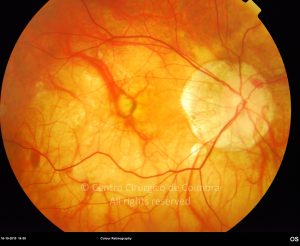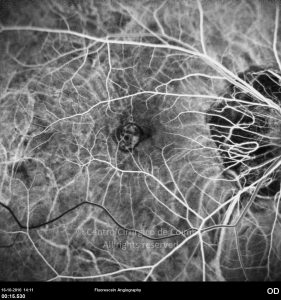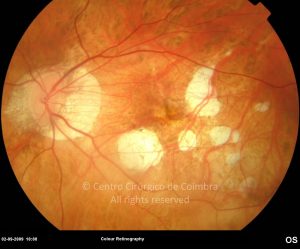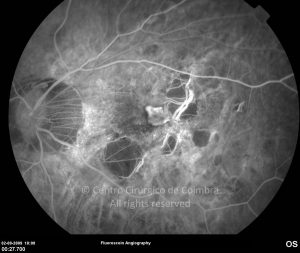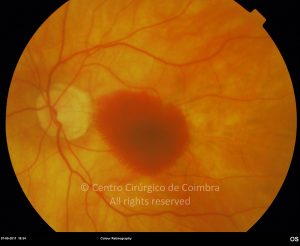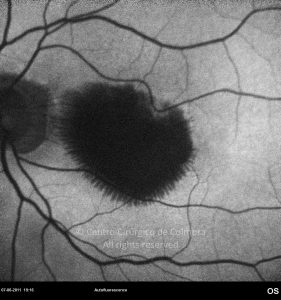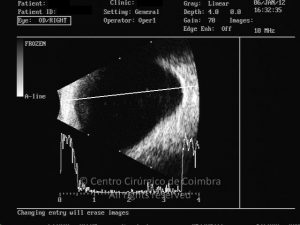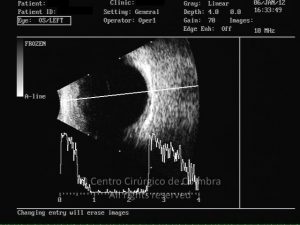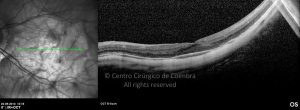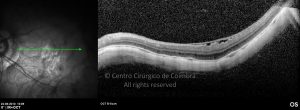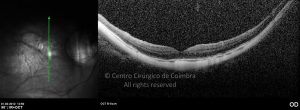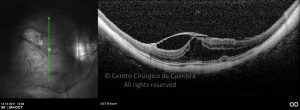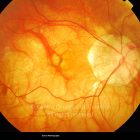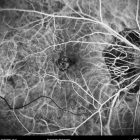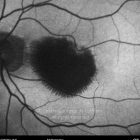Degenerative myopia is characterized by a refractive error of at least -6.00 diopters, with an axial length of the globe of more than 26 mm. Progressive choroidal degeneration is then usually associated in the posterior pole.
The overall expansion of the globe with sclera thinning results in the hallmark ectasia of degenerative myopia: the posterior staphyloma. Progressive axial elongation appears directly involved in the occurrence of the posterior vitreous detachment, peripheral breaks, and posterior pole degeneration.
Central visual impairment can be due to lacquer cracks, atrophic areas, new choroidal vessels, or a macular hole with posterior retinal detachment.
Pathogenesis is not clearly understood and could be due to heredo-degenerative factors.
Degenerative myopia is associated with an increased risk of developing a choroidal neovascular membrane and a rhegmatogenous retinal detachment.





